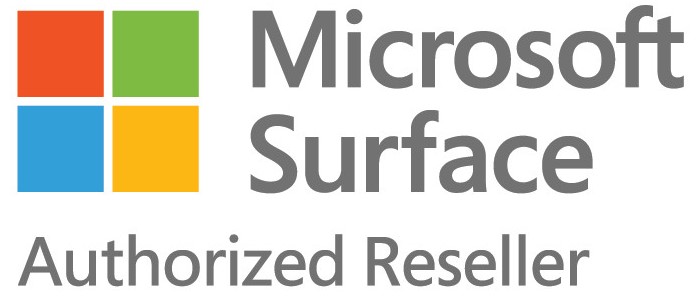Autodesk BIM Collaborate Pro for Three Year Commercial Subscription License
Key Features
- BIM Collaborate is cloud-based design collaboration and co-ordination software that connects AEC teams, helping you to execute on design intent and deliver high-quality constructible models on a single platform. Stay up to date with design progress. Make smarter decisions with project insights.
It’s hard to overstate the
significance of BIM as the next step for many industries these days
(construction-related businesses, of course). The original concept was based on
the three parts of the name – Building, Information, Modeling – and was
impressive enough on its own for the construction industry that is generally
slow to evolve. However, the broader definition of BIM aims to radically
transform and improve the overall business performance for every participant of
the process.
The truth is, BIM is not done evolving, making it even more interesting
from a long-term adoption perspective. Nowadays BIM can refer to both a
specific technology aspect (that is limited in its purpose), and an overarching
idea that affects the construction project lifecycle, as well as the other
phases of the BIM process in general, including
governance, standards, people, and so on.
One thing that is permanent for
all definitions of BIM is the model-centric nature of it – since a lot of the
benefits that BIM provides are derived from the unique, model-centric approach.
BIM
influence
At this point, it should be obvious that BIM is much more than just
another piece of software (even though choosing the correct BIM solution for your specific use
case is incredibly important). It affects other areas, such as:
·
Data Management and Collaboration. Collaboration is one of the biggest
benefits of BIM as a process and platform in general since a good BIM solution
allows one to share relevant and accurate information with different groups of
people, such as designers, managers, stakeholders, etc. The existence of a
somewhat unified data standard makes it even easier to transfer data to
different stages of project development and guarantee accurate, up-to-date data
– from conceptualization to the regular maintenance and post-construction.
·
Governance: The existence of a collaborative platform implies easier
access to various governance-related instruments for the management department
(in other words – organizational frameworks), which transform into more
effective deployment, compliance, performance and upkeep.
·
Workflows with model-centric structure: The change in workflow-specific
operations is quite significant since modeling workflows and deliverable
standards make it easier to share specific data about models, and their usage
for other lifecycle phases.
·
Analysis of the asset models and general structures: Analysis
capabilities are also an integral part of many project stages since it can
automatically point out clash detection errors, among other things. The
analysis also applies to the BIM “dimensions”, from the classic 2D and 3D to
more BIM-specific 4D (3D + time), 5D (4D + cost), and some others that are not
yet as popular (6D, 7D, etc.)
Benefits
and shortcomings of BIM
Since BIM is still a relatively
new solution and concept in many regions, in its current game-changing form,
there’s still a lot of people that don’t use all of the advantages that BIM is
capable of providing. Let’s look over some of the pros and cons that come from
BIM when looking at it as a complex collaboration system:
·
Better collaboration: Since BIM is a collaboration platform, it’s only
fair to expect the improvement in all of the collaboration-related processes.
The accuracy of time and cost predictions increases significantly with BIM, and
there are also other related collaboration benefits like the ability to have a
timescale that everyone can see when working on a project, and so on.
·
The ability to simulate real-life scenarios: The technological progress
that BIM provides allows companies to run predictions based on simulations that
are as close to real-life as it gets. This development makes the
decision-making process that much shorter, showing you the consequences of each
change in real-time.
·
A significant decrease in the number of reworks: The collaboration
aspect of BIM is also crucial for the reduction of the number of reworks due to
all of the participants of the process, including the client, having access to
an actual real-model of the project, with the ability to suggest changes before
the construction process begins. This is a great way to find out various clash
problems on the design stage, and before the actual
construction.
It’s true that BIM offers a
plethora of different benefits to users, but there are still a few factors that
prevent it from growing to its full potential:
·
No concrete unification rules: One of the biggest factors of BIM –
communication and collaboration – is that it suffers greatly from the lack of a
unified classification system that would ease the interaction with different
file standards. Different standards have different information about specific
objects that may or may not impact the effectiveness of the process in general.
This is why the development of a single unified standard would make BIM even
more effective than it is now.
·
The lack of knowledge about BIM in the industry: Even though BIM has
existed in one way or another since the 70s, its rise in popularity happened
recently, and a lot of the industry players are still wary about it, despite
the apparent advantages that should eventually cover all of the implementation
costs. It’s true that both time and costs of training your entire staff to work
with BIM can be a significant investment, which is a common problem for the
majority of newer technologies in general. Luckily enough, many companies reap
nearly instant benefits when BIM is properly implemented in their environment
and culture.
Technical Details
| Brand: | AUTODESK |
|---|---|
| Model number: | Autodesk BIM Collaborate Por Software |
| Part Number: | Autodesk BIM Collaborate Por Software |
| Seller SKU: | Autodesk BIM Collaborate Pro |
| Manufacturer: | Autodesk |
| Origin: | India |
| Availability: | In Stock |
| Minimum order quantity: | 1 |
| Date first listed on Authorized Software Reseller : | Mar 30, 2024 |
It’s hard to overstate the
significance of BIM as the next step for many industries these days
(construction-related businesses, of course). The original concept was based on
the three parts of the name – Building, Information, Modeling – and was
impressive enough on its own for the construction industry that is generally
slow to evolve. However, the broader definition of BIM aims to radically
transform and improve the overall business performance for every participant of
the process.
The truth is, BIM is not done evolving, making it even more interesting
from a long-term adoption perspective. Nowadays BIM can refer to both a
specific technology aspect (that is limited in its purpose), and an overarching
idea that affects the construction project lifecycle, as well as the other
phases of the BIM process in general, including
governance, standards, people, and so on.
One thing that is permanent for
all definitions of BIM is the model-centric nature of it – since a lot of the
benefits that BIM provides are derived from the unique, model-centric approach.
BIM
influence
At this point, it should be obvious that BIM is much more than just
another piece of software (even though choosing the correct BIM solution for your specific use
case is incredibly important). It affects other areas, such as:
·
Data Management and Collaboration. Collaboration is one of the biggest
benefits of BIM as a process and platform in general since a good BIM solution
allows one to share relevant and accurate information with different groups of
people, such as designers, managers, stakeholders, etc. The existence of a
somewhat unified data standard makes it even easier to transfer data to
different stages of project development and guarantee accurate, up-to-date data
– from conceptualization to the regular maintenance and post-construction.
·
Governance: The existence of a collaborative platform implies easier
access to various governance-related instruments for the management department
(in other words – organizational frameworks), which transform into more
effective deployment, compliance, performance and upkeep.
·
Workflows with model-centric structure: The change in workflow-specific
operations is quite significant since modeling workflows and deliverable
standards make it easier to share specific data about models, and their usage
for other lifecycle phases.
·
Analysis of the asset models and general structures: Analysis
capabilities are also an integral part of many project stages since it can
automatically point out clash detection errors, among other things. The
analysis also applies to the BIM “dimensions”, from the classic 2D and 3D to
more BIM-specific 4D (3D + time), 5D (4D + cost), and some others that are not
yet as popular (6D, 7D, etc.)
Benefits
and shortcomings of BIM
Since BIM is still a relatively
new solution and concept in many regions, in its current game-changing form,
there’s still a lot of people that don’t use all of the advantages that BIM is
capable of providing. Let’s look over some of the pros and cons that come from
BIM when looking at it as a complex collaboration system:
·
Better collaboration: Since BIM is a collaboration platform, it’s only
fair to expect the improvement in all of the collaboration-related processes.
The accuracy of time and cost predictions increases significantly with BIM, and
there are also other related collaboration benefits like the ability to have a
timescale that everyone can see when working on a project, and so on.
·
The ability to simulate real-life scenarios: The technological progress
that BIM provides allows companies to run predictions based on simulations that
are as close to real-life as it gets. This development makes the
decision-making process that much shorter, showing you the consequences of each
change in real-time.
·
A significant decrease in the number of reworks: The collaboration
aspect of BIM is also crucial for the reduction of the number of reworks due to
all of the participants of the process, including the client, having access to
an actual real-model of the project, with the ability to suggest changes before
the construction process begins. This is a great way to find out various clash
problems on the design stage, and before the actual
construction.
It’s true that BIM offers a
plethora of different benefits to users, but there are still a few factors that
prevent it from growing to its full potential:
·
No concrete unification rules: One of the biggest factors of BIM –
communication and collaboration – is that it suffers greatly from the lack of a
unified classification system that would ease the interaction with different
file standards. Different standards have different information about specific
objects that may or may not impact the effectiveness of the process in general.
This is why the development of a single unified standard would make BIM even
more effective than it is now.
·
The lack of knowledge about BIM in the industry: Even though BIM has
existed in one way or another since the 70s, its rise in popularity happened
recently, and a lot of the industry players are still wary about it, despite
the apparent advantages that should eventually cover all of the implementation
costs. It’s true that both time and costs of training your entire staff to work
with BIM can be a significant investment, which is a common problem for the
majority of newer technologies in general. Luckily enough, many companies reap
nearly instant benefits when BIM is properly implemented in their environment
and culture.
No reviews
Frequently Bought Together
Contact us
Complete this Enquiry Form to obtain additional information about our services or send personal complaints. We will analyze your enquiry and return to you shortly by email or phone.

Related Items


























